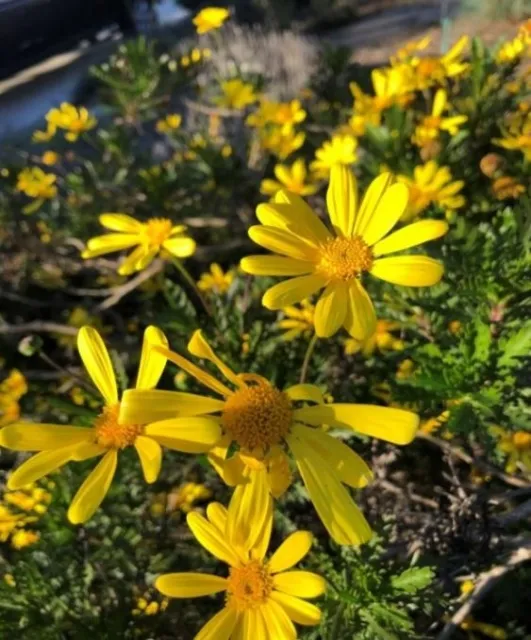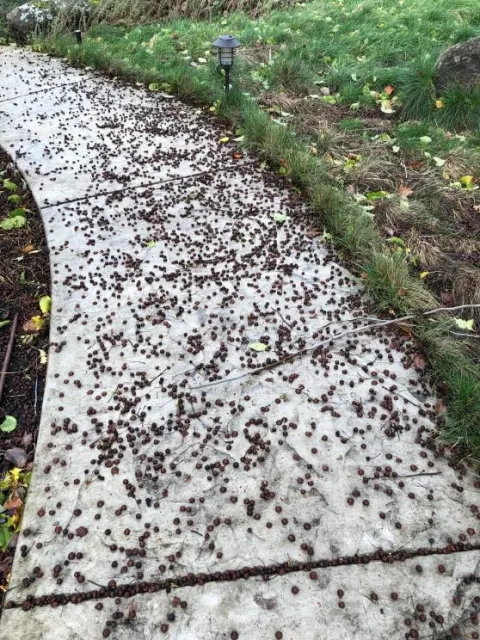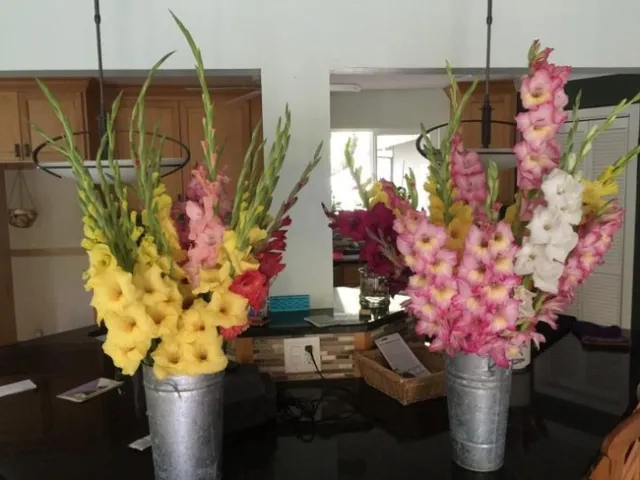Plants of the Season
SHRUB: African Bush Daisy. There are many species but only one appears to be in commerce (Euryops pectinatus). It is a small shrub that can grow to 5'x 5'. It has a profusion of yellow daisy-like flowers and starts blooming in February and continues for several months. There is a dwarf version that is slightly smaller https://www.monrovia.com/dwarf-euryops.html. It thrives in full sun and does best in zones 9-11 although it can be grown as an annual in colder zones.
It is mostly a non-hardy species that does very well in our warm Central Valley. This is a plant with appealing finely cut green or grey-green foliage all season long. It is a tough plant that survives all but the most extreme warm weather conditions including moderate drought. It can also be planted in a container, but I think it does better in the ground with less worries about watering. If planted either singly or in multiple clumps, it can make quite a splash of bright yellow in the landscape. Maintenance includes mulching and cutting and trimming out any dead branches.

TREE: Bradford Pear is a cultivar of (Pyrus calleryana) which is native to China and Vietnam. It was introduced by the U.S. Department of Agriculture in the mid-1960s. Lady Bird Johnson promoted the tree by planting one in downtown Washington , D.C. In my opinion this introduction was a colossal mistake for reasons I will explain. This tree grows to a max height of 30 ft. or more and features early prolific white blooms.
If there are no other cultivars or species present, the resulting seeds in the very small pears are sterile which is a good thing as a large tree produces perhaps millions of them which fall on my walk and driveway with each winter storm. However, if cross fertilization occurs with other cultivars, the seeds are viable and spread by birds. Hence, the species and other cultivars are now considered to be invasive in the East and Midwest with trees popping up along roadsides and wherever soil is disturbed. The tree is touted as resistant to fire blight, but it does get infected and some limbs die and break off to add one more chore to the homeowner. I mention all this to encourage homeowners to never plant one, yet they are still offered for sale.

BULB: Gladiolus gets its name from the word for sword in Latin because its leaves are sword like in appearance. There are 300 species but the ones for sale today are mostly hybridized cultivars which come in a range of colors: white, yellow, pink and lavender, rose, burgundy, purple and even green as well as in various bicolors. These flowers grow from corms which can be planted from January to April to enjoy flowers in the late spring through summer. It is good to plant corms every two weeks or so to produce flowers over a longer period of time. Flower bloom 10-12 week after planting. To get the best flowers, it is best to plant large corms 1¼ inch or larger in diameter. Set corms in holes about 5-6 inches deep with the pointed end facing up and spaced about 6-8 inches apart. If grown primarily for cut flowers, plant them in double rows as it is easier to water using drip tape as well as easier to harvest flowers. If planted with other flowers in borders or annual beds, plant the corms in groups of 7 or more for the best effect. I have grown several rows of them in the past and enjoy some magnificent bouquets all summer.

